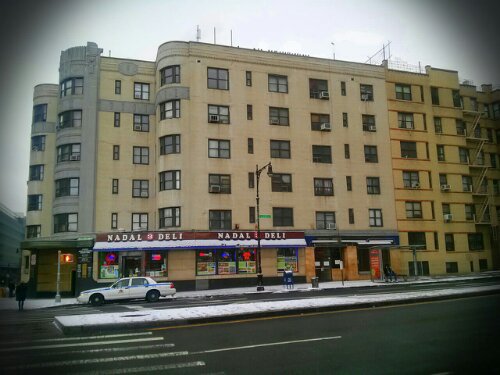To explore The Bronx is to observe its layers, the living archaeology of the borough, all that is beyond I-95, Yankee Stadium, the Bonx Zoo, and the Botanical Gardens.
The oldest layer is the land itself: its hills, geology, rivers, and shore. Even that has changed. Most notably, the Harlem River was re-routed, cutting off Marble Hill from the island of Manhattan, while technically remaining part of that borough. One can see the natural history of the borough in Pelham Bay Park, Van Cortlandt Park, etc.. It’s even possible to kayak up the Bronx River from the Sound as far as the Zoo – a great way to see both natural and human history.
In the next layer are the 18th Century routes and villages that persist, at least in name. Roads such as Westchester Avenue, Boston Road, Kingsbridge Road, and Broadway all follow routes that existed in colonial times. Westchester Village was a village (cluster of houses?) at a crossroads, lying within Westchester Township (most of the present-day Bronx), which was one of the 21 townships carved out of Westchester County in 1788. Fordham, which now generally means the university of that name, formerly was Fordham Manor, extending west of the present-day campus. Kingsbridge and Williams Bridge both denote ancient bridges (long since replaced). Virtually nothing physical of this layer can be seen today, just the place names and the fact that some current roads follow old routes.
The Old Croton Aqueduct and High Bridge might be its own layer. Constructed between 1837 and 1848, this feat of engineering conveyed water 41 miles, from Croton River to New York City, by gravity alone. You can still walk along Aqueduct Avenue and Aqueduct Park. High Bridge remains, and is scheduled to be re-opened in 2014, for people to walk across.
Next there are just a few surviving houses from before 1850: the Van Cortlandt House (1748), the Poe Cottage (c. 1797), the Valentine-Varian House (1758), the Pell-Barstow Mansion (1842), and the Lorillard Snuff Mill (1840). Few other buildings of that age survive. It is surprising, but revealing, that in a borough of 1.4 million people, 42 square miles, and with thousands of buildings, just a handful have survived for over 150 years.
From the second half of the 19th century, much more remains: churches, Fort Schuyler, mansions in Riverdale, some brownstones in Mott Haven, etc. From the Twentieth Century, there’s a lot more: transit buildings, colleges, homes, and more. See the National Register of Historic Places for a fuller list.
But it’s not just about looking at old buildings. The 20th century layers are social, ethnic, economic, political, and technological. The urban changes since WW2 are all visible. Walk the Grand Concourse, where wealthy Jews lived until the Sixties. Walk along Washington Avenue in East Tremont, past the junkyards, under the Cross Bronx Expressway and ponder the destruction wrought by Robert Moses in the Fifties. Go to The Hub or Fordham Center and see the lively, crowded, shopping districts of the current Hispanic population. Have a cafe con leche in any of a thousand Latino restaurants. Check out the overflowing shelves of a tiny Halal Meat and Desi Grocery across from the Poe Cottage. Walk around the time capsule that is Arthur Avenue, a surviving Little Italy, a genuine Italian enclave in Belmont, replete with pasticcerias, butcher shops, bakeries, cafes, and more. Buy a toilet seat and bathroom sink faucet set from S. Hyman Plumbing Supply in Tremont. Admire the stained glass windows and sculptures in the subway stations.
The point here is to experience the Bronx as a real, living, city. (A brief digression on safety. Crime in the Bronx is way down from its peak in 1990; murders down 83%, assaults down 50%, etc. I feel very safe walking around.) There’s more than the famous tourist destinations mentioned in the first sentence. They are wonderful, well worth seeing. But the Zoo, Yankee Stadium, and the Botanical Garden don’t reveal much of the borough itself, as a real place.
The point is to observe the visible evidence of all the changes that have occurred and are still ongoing. Natural history, landmark buildings, transit systems, changing neighborhoods, etc. are all there. To explore, absorb, and participate in the fascinating, diverse, gritty, occasionally ugly, urban reality of The Bronx is a wonderful experience.
